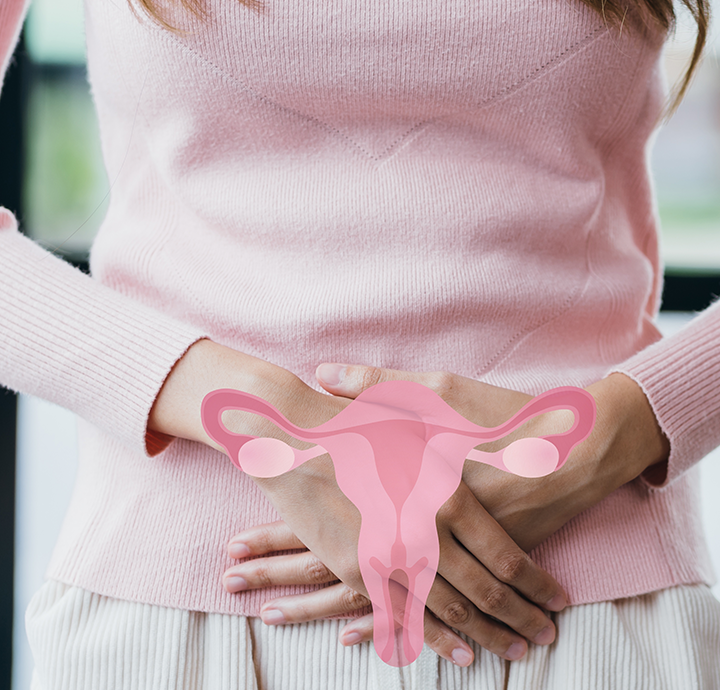
Insemination treatment is defined as the process of releasing the sperm taken from the man into the uterus with the help of a thin plastic cannula.
In its simplest form, it is a type of treatment that aims to have a child outside the normal intercourse method. Today, with the help of high success rates of this treatment, it is frequently applied to couples who do not have children. In this way, the childbearing processes of individuals who cannot have children with the sexual intercourse method are supported.
For many individuals and couples facing fertility challenges, the journey to parenthood can be a complex and emotionally charged one. Fortunately, advancements in fertility medications and reproductive technology have opened doors to a range of options, including intrauterine insemination (IUI), which has offered hope to single women, couples with unexplained infertility, and those in need of donor sperm to achieve their dream of starting a family.
This is a widely used fertility treatment that involves the careful preparation and placement of healthy sperm directly into the uterus, increasing the chances of successful fertilization. Candidates should explore the various aspects of IUI treatment, including the IUI procedure, its success rate, and the critical role of fertility drugs before the process.
Before diving into the details of this fertility treatment, it's essential to understand the role of a sperm bank in the process. A sperm bank is a facility that stores and provides sperm samples from donors. These donors undergo rigorous screening processes, including extensive blood tests, to ensure the quality sperm they provide. This ensures that the sperm used in IUI treatments has a high sperm count and is free from potential genetic or infectious issues.
The fallopian tubes play a crucial role in natural conception, as they facilitate the journey of sperm to meet the egg. However, in cases where the fallopian tubes are compromised, blocked, or damaged, achieving pregnancy can be challenging. This is where IUI comes into play. By bypassing potential obstacles and placing the sperm sample directly within the uterus, intrauterine insemination increases the likelihood of fertilization.
This treatment method, which is also known as fertilization or insemination, enables the insertion of male sperm into the female reproductive system for successful reproduction. During the procedure, a thin catheter is used to introduce the prepared sperm into the uterus. Sperm preparation is an important factor before the sperm taken from the father-to-be is introduced into the uterus. Normal sperms are separated from dead and immobile sperms.
In this way, more motile sperm are introduced into the uterus to increase the chance of pregnancy. In IVF treatment, it is aimed to create a pregnancy that cannot be achieved in the normal way with this method. The high success rates in the vaccination or intrauterine insemination (IUI) method provide a significant increase in the number of applicants for this treatment.
The insemination method is applied to couples who cannot have a baby by normal means. However, vaccination is not directly applied to every couple who does not have children. In order for the treatment to be applied, it is necessary to determine the suitability of the couples for the treatment. The success of insemination treatment also depends on how suitable the couples are for this treatment. This therapy is generally applied in the following types of cases:
In almost all cases where sperm cannot reach the female reproductive organ naturally due to any reason, vaccination treatment can be applied. In this context, it is an extremely important factor that couples are suitable for treatment. Among the things to be considered in this therapy, the general health status of couples is also considered among the important issues.
The treatment process begins after the planning and preparation stages for couples who have no objection to the application of pre-treatment. Basically, this treatment process consists of several stages: egg enlargement, hatching, and insemination. Below, steps about "how does intrauterine insemination work" are listed.
After the preparation stages are completed, the woman is first taken to the examination table and a speculum is inserted into the vagina for the insemination procedure. With the help of a thin catheter, it is passed into the uterus after passing through the cervix. This catheter contains suitable sperms taken from the man. The treatment is completed after a few simple steps. In most cases, it is easily performed without the need for general anesthesia. For a successful treatment, the woman and the man must fulfill all the conditions in terms of reproduction, and appropriate conditions must be created.
After the completion of insemination treatment, the healing process takes place very quickly. After this medical application, patients are usually rested in the supine position for 15-20 minutes. Then, the process is followed up and pregnancy is supported. Insemination is a very easy, fast, and painless method compared to many other surgical procedures. The healing process should be followed by a specialist after the vaccination method is applied.
After the procedure, people can usually return to their normal daily activities immediately. In case of possible pain and discomfort after the application, immediate intervention is performed. People can also continue their sexual activities after the procedure. Within the scope of the process, the process is followed by the specialist who applies the treatment. The suitability of the couples before the surgery, more precisely before the simple application, is also an important factor for the subsequent process.
After waiting, observation, and follow-up processes, pregnancy is aimed to occur as soon as possible. This process is usually completed in a short time. After the pregnancy is detected, the process is followed in a controlled manner with experts, as in normal pregnancy. Afterward, birth preparations can be started normally. The sperm quality of the man is also among the important factors in the success of this process.
There are many different advantages for couples in this process. It is defined as an effective and simple method for couples who cannot get pregnant naturally, especially thanks to its short-term results. These features constitute the biggest advantage of this medical practice. The main advantages obtained with insemination treatment are briefly as follows:
The insemination method is generally defined as a treatment method that is easier to apply. Today, insemination is an easier and more advantageous method compared to many other reproductive treatments. With Op. Dr. Nurettin Türktekin, who has high success rates in insemination treatments in Turkey, ensures that the process is completed with a more advantageous and high success rate. You can also have information about how much does intrauterine insemination cost by contacting us.



Ovarian cysts are fluid-filled sacs or vesicles seen inside the ovary. Normally, during each menstrual period, a cyst called a follicle, which carries the egg cell and can reach 3 cm in size, forms in the ovaries. Then this cyst cracks and the egg is released. In young girls with ovulation problems, normal or physiological follicle cysts that cannot rupture can grow every month and reach 5-10 cm, while small numbers of 0.5-1 cm in size, which we call polycystic ovaries, can be seen in series. Apart from these functional cysts, benign or malignant ovarian cysts can also be seen in all age groups.
Except for the most common functional ovarian cysts, cysts can be benign or malignant tumoral cysts. In addition, as a result of infection, abscess-shaped cysts may occur, which is usually accompanied by pain and high fever.
A total of 1-3 eggs are developed in insemination treatment. In general, the development of more than 3 eggs is not recommended due to the risk of multiple pregnancies. The quality of the sperm taken and the egg development process are important to the success of the treatment.
In insemination treatment, it is necessary to be careful in sexual intercourse before and after the operation. It is recommended not to have intercourse for 3 days before the application. In the sperm collection process, sexual abstinence will be required for a while to maximize sperm quality.
The drugs used in insemination treatment may vary according to the people to be treated. In general, hormone medication can be used for women who do not ovulate and ovulate irregularly. Although clomiphene and letrozole are common, drug preferences and applications are determined according to expert preference.